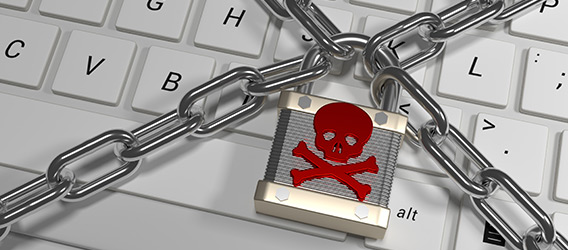It’s Time to Take Ransomware Seriously
A recent internet security threat report has found that ransomware attacks have grown by 113 percent in the past two years.

There are three main types of ransomware:
- Phony antivirus software that pops up and insists you pay to fix your now-infected PC
- Malware that encrypts your files and demands money to regain access
- Screen lockers that pretend to be from law enforcement, accusing you of illegal activity and immobilizing your PC until you pay a fee
As Symantec, the publisher of the report, points out, law enforcement has so far been disconcertingly helpless against these attacks, and even IT teams are struggling to protect their organizations from the evermore sophisticated threats. .
In many cases, the solution lies with simply closing your browser—yet the time and monetary investment criminals are making suggests that many ransomware victims are too often paying the fake fines.
The first thing to recognize to protect yourself is that ransomware frequently uses malicious email attachments. A common form is bills or invoices that appear urgent, legitimate and safe.
Another key to girding your life from ransomware is to back up important documents regularly on an external hard drive or Cloud service.
Also install computer security software such as System Mechanic Pro®, which uses a two-pronged approach to malware protection in that it not only regularly updates itself to keep current with a list of known threats, but it also looks for suspicious software behavior and quarantines it before it can do damage.
Be cautious about using free Wi-Fi hotspots like those commonly found at coffee shops or airport lounges.
Turn off Bluetooth on your smartphone when entering retail checkout lines. Some cybercriminals can mine data through this connection and instantly transmit it around the world.
At home, immediately delete any suspicious emails from your bank, internet service provider, creditors and the like. Never click on attachments if you suspect something off about them, including that they request any personal information.
Avoid clicking on unfamiliar banners and pop-ups while web browsing. .
Install a file management system like Belarc Security Advisor, which regularly looks for junkware that may already have silently installed itself on your PC.
Consider obtaining a junkware removal tool that provides a second layer of security and feedback whenever changes are made to your operating system.
Be sure the Windows firewall in your Control Panel is up and running.
Make sure your PC is set to automatically install security patches and other updates to allow it to prevent the latest and most sophisticated attacks.
Taking some of these steps to fortify your PC can be costly and complicated if you don’t know how to navigate the world of tech security. If you are unsure how to effectively execute any of these steps, it may be worth a call to iolo Premium Services (iPS) to see how to get started. An iPS security technician can walk you through several actions you should take now to protect yourself from these ever increasing attacks.
Specifically, the folks at iPS can help you:
- Remove destructive or annoying pop-ups, toolbars and plug-ins
- Ferret out hidden malware including spyware and “malvertising”
- Optimize needlessly sluggish internet connections
- Diagnose software conflicts and errors to speed up your PC
- Install or re-install Windows security patches and hardware driver updates
The Toll-free number for iPS in the U.S. and Canada is 1-877-857-9280. It might be worth a chat with a technician to discover where you may be vulnerable to ransomware or other PC security threats.








